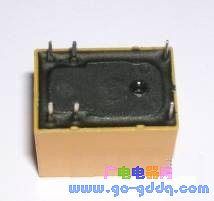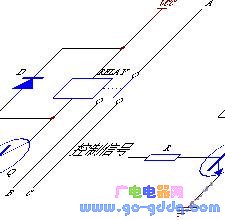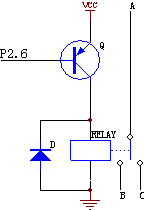![]()
Photocoupler
A relay is an electronic control device that consists of an input system (also known as the control circuit) and an output system (also called the controlled circuit). It is commonly used in automatic control systems to manage larger currents using a smaller one, acting like an "automatic switch." Relays play a crucial role in circuit automation, safety protection, and signal conversion. Most relays are electromechanical devices where an electromagnet's armature can either close or open one or more contact points. When current flows through the coil, it creates a magnetic field that pulls the armature, changing the contact state. Relays are typically categorized into electromagnetic, thermal reed, and solid-state types. The relays featured on the enhanced PIC experiment board are illustrated in Figure 1.
Electromagnetic relays consist of a core, coil, armature, and contact springs. When voltage is applied across the coil, current flows, creating an electromagnetic field. This field attracts the armature, which moves the contacts from their normally closed position to a normally open one. When the coil is de-energized, the magnetic field disappears, allowing the spring to return the armature to its original position. This action switches the contacts between normally open and normally closed states. A normally open contact is open when the coil is not energized, while a normally closed contact is closed under the same condition.
Thermal reed relays are a modern type of temperature-sensitive switch. They use temperature-responsive magnetic materials to detect and regulate temperature. These relays include a temperature-sensitive magnetic ring, a permanent magnet ring, a reed switch, and other components. Unlike traditional relays, they do not require coil excitation. Instead, the permanent magnet drives the switching mechanism, with the temperature-sensitive ring controlling whether the magnetic force reaches the reed switch.
Solid-state relays are four-terminal devices with two terminals for input and two for output. They provide electrical isolation between the input and output circuits, making them ideal for applications requiring high reliability and minimal mechanical wear. They come in AC and DC types and can be classified based on switch type (normally open or normally closed) and isolation method (hybrid, transformer, or optically isolated). Among these, opto-isolated relays are the most common.


Figure 1: Relay physical diagram
In practical applications, solid-state relays are often chosen for their fast response time and durability. They are widely used in industrial automation, home appliances, and power management systems. Electromagnetic relays, however, remain popular due to their simplicity and cost-effectiveness.
Relay Control Circuit
In microcontroller-based systems, relays are usually controlled via transistors. A typical drive circuit is shown in Figure 2:


Figure 2 (a) and (b)
Figure 2: General relay drive circuit
In such circuits, a diode is often connected across the relay coil to suppress back-EMF generated when the coil is turned off. This helps prevent electrical interference. In Figure 2(a), AB represents a normally open contact, and AC is a normally closed contact. When the control signal is high, the normally open contact closes (AB turns on), and when the signal is low, the normally closed contact closes (AC turns on). In Figure 2(b), the control signal polarity is reversed compared to Figure 2(a). This configuration is commonly used on test boards for demonstration purposes.
OPS Computer
Built In Pc Cter ompu,OPS computer,Microcomputers
Jiangsu Qilong Electronic Technology Co., Ltd. , https://www.qilongtouch.com



